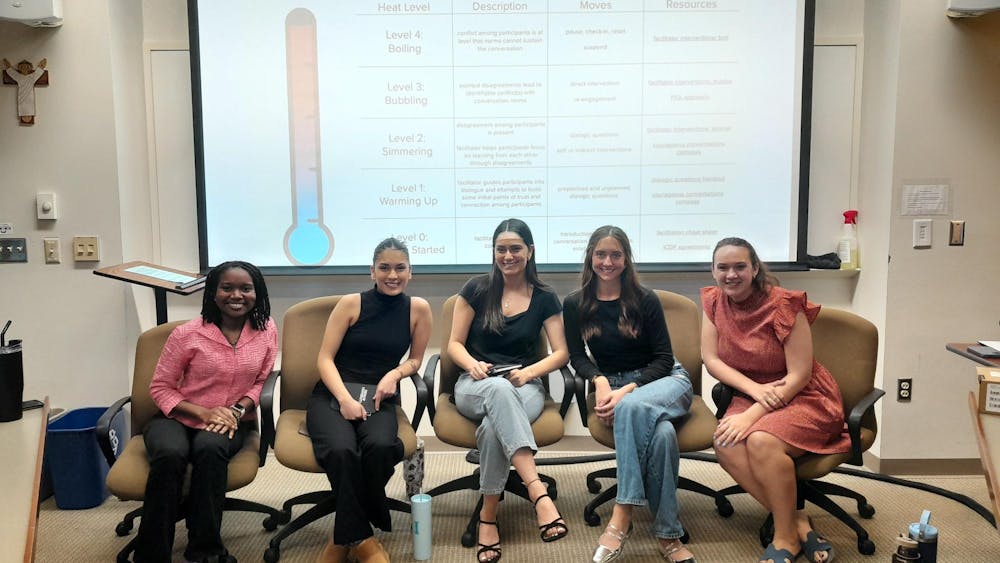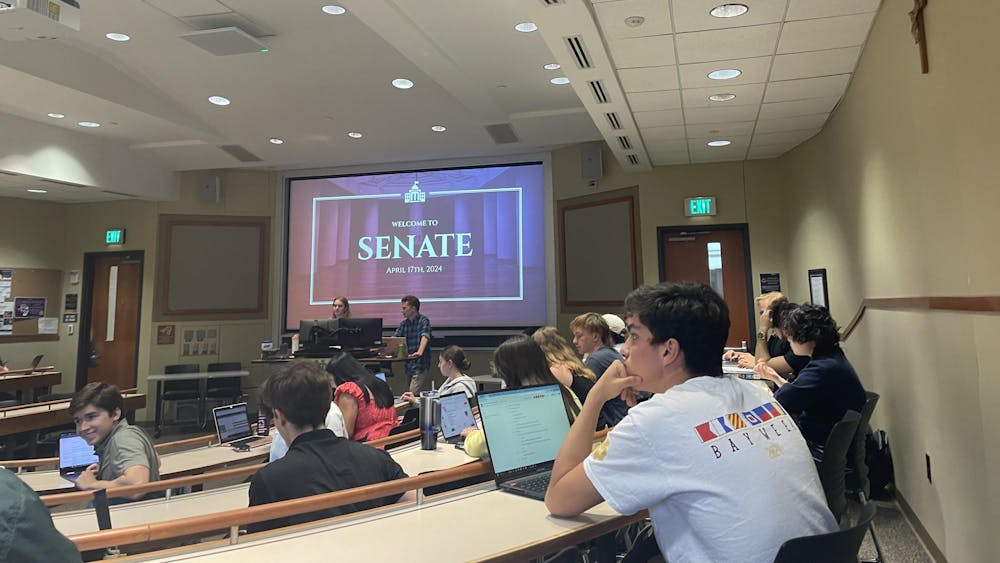As part of its 15th annual Notre Dame Energy Week Plus, ND Energy hosted assistant vice president for utilities and maintenance Paul Kempf for a presentation on Notre Dame’s sustainability goals Tuesday evening.
The presentation, titled “De-carbonization: Past, Present and Future,” began with Kempf providing a brief summary of Notre Dame’s history in relation to sustainability efforts starting in 2009.
“A big part of what we’ve done is planning,” he said. “By understanding where we were and where we could go, that could inform the larger strategy.”
That larger strategy became the University’s 2010 goal to reduce carbon emissions to 50% of 2005 levels by 2030 and 83% of 2005 levels by 2050.
Additionally, in response to Pope Francis’ 2015 encyclical, ‘Laudato Si’,’ which urged Catholics to live more sustainably, Notre Dame made the decision to stop burning coal, the source of roughly 90% of Notre Dame’s energy at the time. Kempf recalled a brief back-and-forth with the board of trustees before the University eventually landed on an energy timeline.
“We asked for seven years to get off coal and [the board of trustees] looked at us and said, ‘How about three?’ and we ended up settling on five and dropped coal in time for that plan.” Kempf said.
Next, Kempf spoke on more recent changes in the University’s energy strategy, discussing the 2020 update to the sustainability plan.
“Looking back, we were actually achieving our goals set in 2010, 10 years ahead of time,” he said. “And so, it was time to decide, how do we update the plan?” As a result of the rapid progress between 2010 and 2020, the University committed to carbon neutrality by 2050.
Kempf said he believed in the University’s ability to achieve neutrality by 2050, citing its strong commitment to large investments in sustainability and the emergence of new energy technologies. He particularly emphasized the role technological development had in the University’s ability to get so far ahead of its 2010 goal.
“Things that you dreamed about 10 years ago actually came forward that were unexpected,” he said. “I don’t know what will come forward in the next 10 years, but I’m confident something will come forward.”
Supplementing Notre Dame’s own investments in energy, the University has bought carbon offsets from surrounding energy suppliers, such as Indiana Michigan Power. Buying energy from external sources allows Notre Dame to offset its domestic carbon footprint, but Kempf said that it cannot be at the center of Notre Dame’s strategy.
He said wealthy schools “can solve every problem by throwing money at it.”
That was not the goal we had from the beginning or going forward,” he added.
Kempf then discussed some efforts Notre Dame has made to source sustainable energy locally in order to, if not reduce the University’s footprint, at least reduce the footprint of the local area.
He mentioned the new St. Joseph solar farm located 6 miles off campus, in which the University invested. The land, bought by Father Sorin in the 1800s, was once a farm that provided food for students at Notre Dame. It now provides energy for the school, which purchases 40% of its solar output.
Looking toward the future, Kempf outlined the projection for the school’s path toward carbon neutrality, saying there was room for emerging technologies, but that the plan couldn’t depend on things that have not been invented yet.
The presentation ended with a Q&A session in which a student asked what the barriers to carbon footprint reductions were, especially for organizations less economically fortunate than Notre Dame. Kempf mentioned climate change deniers and a general lack of education surrounding energy issues, among other things, but emphasized that actions to combat climate change are on the uptick.
“We’ve tried to build a roadmap and a foundation,” he said. “But someone’s gonna have to pick it up and keep going.”
Energy Week Plus began Sept. 17 and runs through the end of the month. The annual event “offers various activities and discussions focused on the current energy landscape and future challenges and opportunities to create a clean and sustainable energy future for all.”
Besides several energy-related presentations, guided tours of solar farms and a local hydroelectric plant are also included in the event’s extensive schedule.













